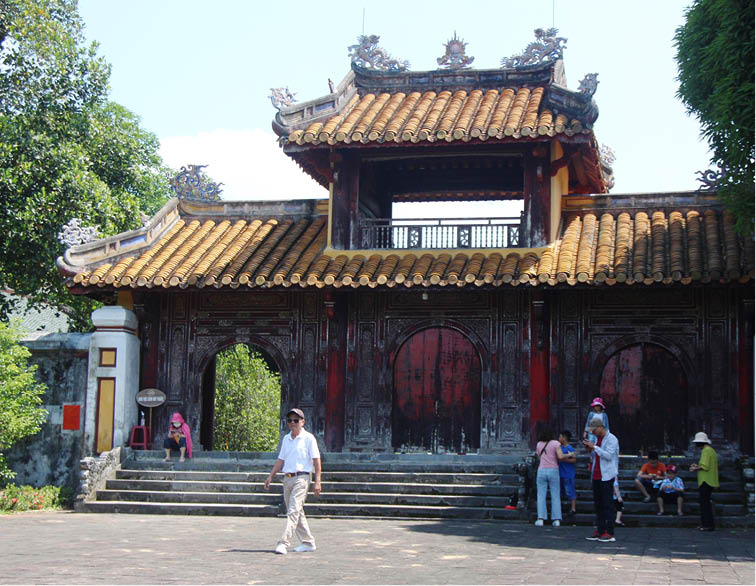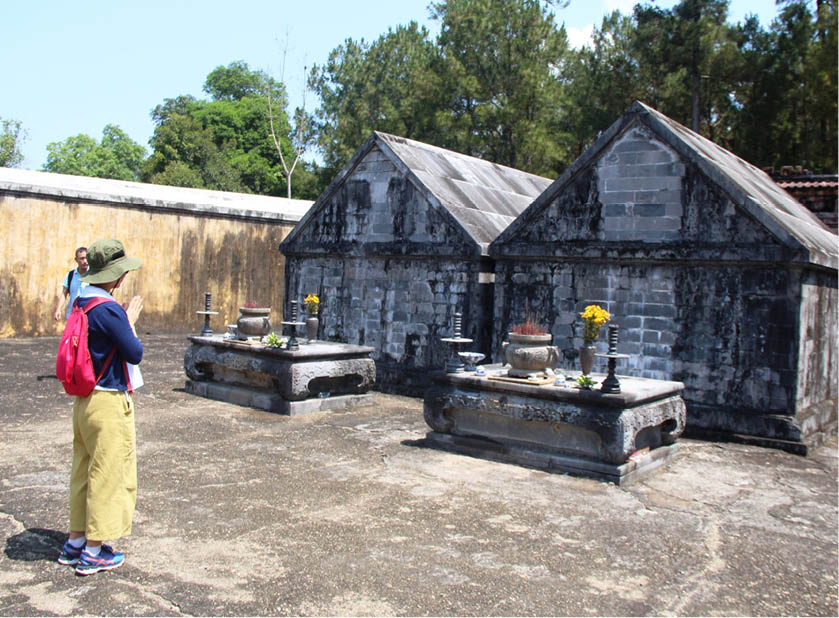
In the early days of spring, when the weather was still chilly despite the sparkling golden sunlight, we followed groups of visitors to Gia Long mausoleum to visit and experience the romantic scenery like a beautiful picture gifted by the nature combined with talented human design.
Gia Long mausoleum, also known as Thien Tho mausoleum is located in Huong Tho commune (Huong Tra town), built in the period from 1814 to 1820 , including many tombs of the emperor, empresses and their relatives. Among the Nguyen emperors' tombs, this is the largest tomb area with about 28 km2 including 42 mountains, which is rated as "a magnificent picture of the coordination between nature and architecture".
With no more obstacles like many years ago, the road from Hue’s city center to Gia Long mausoleum of 15km long is now straight and paved, as relating units have invested in fundamental service, providing attractive eco-cultural tourism to attract tourists.
More than 1km from the entrance to the mausoleum is the shade of green trees, with the pine hills from afar gradually appearing like a scene of miniature Dalat. After a long time of free entry, recently the entrance fee has also been applied for the visitors to visit the royal mausoleum of Gia Long located in Hue Monuments complex.

Visiting the resting place of Emperor Gia Long and the High Empress Thua Thien
Perhaps that is why, now in the early days of spring, many people, by different means of transport, have come to the resting area of this famous historical emperor to both offer incense and visit the heritage space, enjoying the fresh air of the immense mountain landscape.
Right after offering incense at Minh Thanh shrine, visitors leisurely visit the resting place of emperor Gia Long and his wife - the High empress Thua Thien and also the shrines and tombs of relatives located in the same precinct. Surrounding that space is a large lotus lake, with a system of wonderfully romantic footpaths that visitors cannot miss when coming here.
Watching that picturesque scene, many visitors could not help admiring and praising the talent of the ancient people in choosing the landscape. The historical records clearly show that geographer Le Duy Thanh (the son of the scientist Le Quy Don) was the one who found this land, where, according to him, “gathered all peaceful atmosphere radiating from many surrounding mountains and hills, where the positive impacts would last for more than 10 thousand years”.
Born and grown up in Hue city for more than 30 years, but until the beginning of the spring of Tan Suu has Nguyen Ngoc Son just set foot in the famous scenic spot, the resting place of the famous emperor.
According to Mr. Son, although he heard about the emperor's mausoleum from young age, at that time the roads were rough, and when he grew up, he was busy with work, he could not arrange some free time to go there. In addition, the mausoleum of Emperor Gia Long was too far from the mausoleums of others such as Tu Duc, Khai Dinh ... Until recently, through watching television, reading books and newspapers as well as listening to people telling a lot about Gia Long mausoleum, he decided to visit this place.
Currently, the tomb of emperor Gia Long is considered an attractive destination for domestic tourists as well as international visitors on every occasion they come to Hue. Mostly, each visitor spends a lot of time visiting, feeling the tranquility and breathing the fresh air of the place that is considered a charming, romantic landscape.
Story and photos: Nhat Minh
